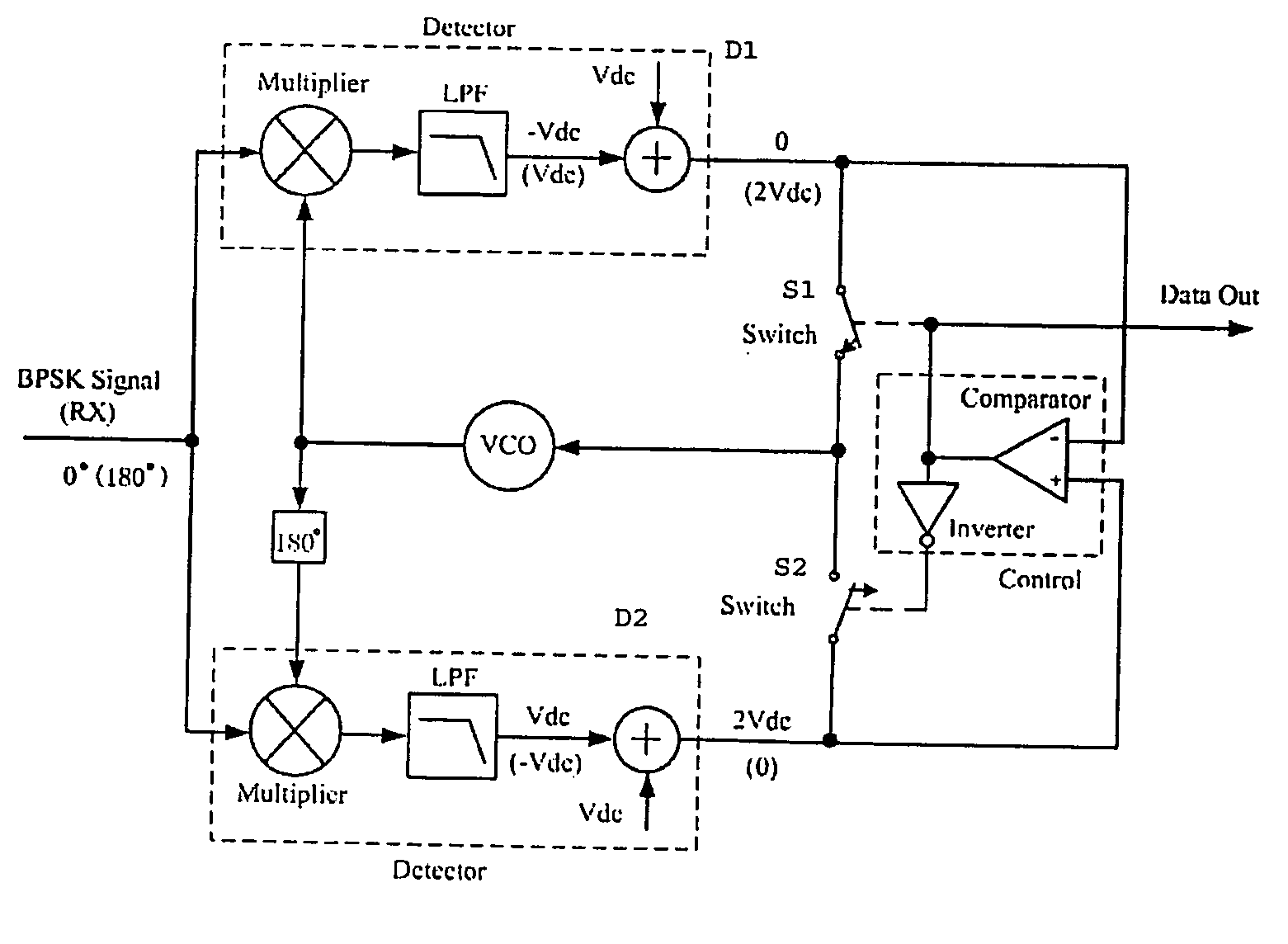BPSK demodulator circuit using an anti-parallel synchronization loop
a synchronization loop and demodulator technology, applied in the direction of phase-modulated carrier systems, digital transmission, angle demodulation by sloping amplitude/frequency, etc., can solve the problem of squaring loops having a further significant significance, receiving noise is also squared, and cannot work at such high frequencies
- Summary
- Abstract
- Description
- Claims
- Application Information
AI Technical Summary
Benefits of technology
Problems solved by technology
Method used
Image
Examples
Embodiment Construction
[0064] The invention provides a novel circuit to demodulate, or extract, the modulated data from a BPSK-modulated carrier. With easily-integrated characteristics, demodulators of the invention may be used in, for example, INMARSAT™ systems, global positioning systems (GPS), radio frequency identification (RFID) systems, and next-generation digital radio systems.
[0065] As used herein, the term “data” is intended to refer to the information or data, which may be digital, which is modulated in a BPSK signal and recovered or demodulated by a BPSK demodulator circuit of the invention. The terms “demodulator” and “demodulator circuit” are used throughout this disclosure and are intended to be equivalent.
[0066] Referring to FIG. 3.1, the preferred embodiment of the circuit uses two parallel phase-locked loops (PLLs) in which only one of the loops is in lock at any given time. One loop is in phase with the carrier at 0° while the other loop is 180° out of phase. If the incoming BPSK signa...
PUM
 Login to View More
Login to View More Abstract
Description
Claims
Application Information
 Login to View More
Login to View More - R&D
- Intellectual Property
- Life Sciences
- Materials
- Tech Scout
- Unparalleled Data Quality
- Higher Quality Content
- 60% Fewer Hallucinations
Browse by: Latest US Patents, China's latest patents, Technical Efficacy Thesaurus, Application Domain, Technology Topic, Popular Technical Reports.
© 2025 PatSnap. All rights reserved.Legal|Privacy policy|Modern Slavery Act Transparency Statement|Sitemap|About US| Contact US: help@patsnap.com



